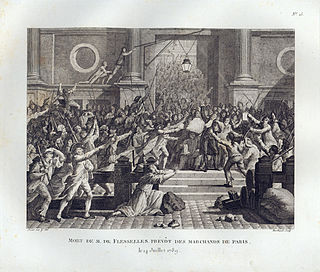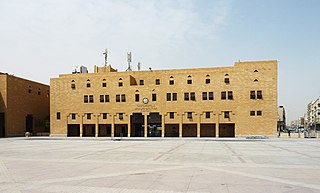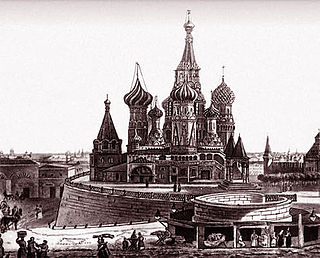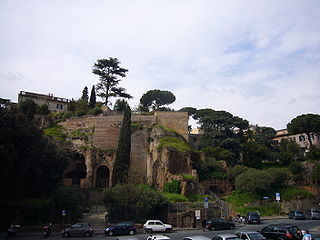 W
WLanterne is a French word designating a lantern or lamp post. The word, or the slogan "À la lanterne!" gained special meaning and status in Paris and France during the early phase of the French Revolution, from the summer of 1789. Lamp posts served as an instrument to mobs to perform extemporised lynchings and executions in the streets of Paris during the revolution when the people of Paris occasionally hanged officials and aristocrats from the lamp posts. The English equivalent would be "String Them Up!" (British) or "Hang 'Em High!"(American)
 W
WAlte Brücke is a bridge in Frankfurt, Hesse, Germany. It is the oldest bridge over the lower course of the river Main, and until 1886 it was the only stone bridge crossing the river. From the Middle Ages until the year 1914, it connected the "Fahrgasse" in Frankfurt Altstadt with the "Brückenstraße" in Sachsenhausen. Since its first mention in official documents in 1222, the development of Frankfurt has been strongly influenced by the bridge. Over the centuries, Alte Brücke has been destroyed and reconstructed at least 18 times. With its 13 brick-built circular arches, the Sachsenhausen Bridge was one of the most prominent buildings of the city, but failing to meet the increasing demands of the modern road and ship traffic, it was demolished in 1914.
 W
WThe Alte Rathaus is a building in central Vienna, located at Wipplingerstraße 8, 1st District.
 W
WBabi Yar is a ravine in the Ukrainian capital Kyiv and a site of massacres carried out by German forces during their campaign against the Soviet Union in World War II. The first and best documented of the massacres took place on 29–30 September 1941, killing approximately 33,771 Jews. The decision to kill all the Jews in Kyiv was made by the military governor Generalmajor Kurt Eberhard, the Police Commander for Army Group South, SS-Obergruppenführer Friedrich Jeckeln, and the Einsatzgruppe C Commander Otto Rasch. Sonderkommando 4a soldiers, along with the aid of the SD and SS Police Battalions with the Ukrainian Auxiliary Police backed by the Wehrmacht, carried out the orders.
 W
WThe Bykivnia graves is a National Historic Memorial on the site of the former village of Bykivnia on the outskirts of Kyiv. During the Stalinist period in the Soviet Union, it was one of the unmarked mass grave sites where the NKVD, the Soviet secret police, disposed of thousands of executed "enemies of the Soviet state".
 W
WCampo de' Fiori is a rectangular square south of Piazza Navona in Rome, Italy, at the border between rione Parione and rione Regola. It is diagonally southeast of the Palazzo della Cancelleria and one block northeast of the Palazzo Farnese. Campo de' Fiori, translated literally from Italian, means "field of flowers". The name dates to the Middle Ages when the area was a meadow.
 W
WThe Place de la Concorde is one of the major public squares in Paris, France. Measuring 7.6 ha in area, it is the largest square in the French capital. It is located in the city's eighth arrondissement, at the eastern end of the Champs-Élysées. It was the site of many notable public executions, including the execution of King Louis XVI, during the French Revolution.
 W
WDeera Square is a public space in Riyadh, Saudi Arabia, in which public executions used to take place. It is sometimes known as Al-Safaa Square, Justice Square and colloquially called Chop Chop Square.
 W
WThe Don Jail was a jail in Toronto, Ontario, Canada, located to the east of the Don River, on Gerrard Street East in the Riverdale neighbourhood. The original building was completed in 1864 and was reopened in 2013 to serve as the administrative wing of Bridgepoint Active Healthcare, a rehabilitation hospital located adjacent to the jail. Prior to its adaptive reuse as part of a healthcare facility, the building was used as a provincial jail for remanded offenders and was officially known as the Toronto Jail. The jail originally had a capacity of 184 inmates, and it was separated into an east wing for the men and a west wing for the women.
 W
WThe Execution Bridge is a bridge and former public execution location in Ghent, Belgium. It is located beside the city's Gravensteen Castle, crossing a branch of the Leie (river) which here forms a moat for the castle. The bridge is a well loved tourist destination.
 W
WGalgberget is a nature reserve just north of Visby on Gotland, Sweden. The area is bounded to the west by the cliff edge, in the east by County Road 149, and in the south by the town of Visby.
 W
WThe Gemonian Stairs were a flight of steps located in the ancient city of Rome. Nicknamed the Stairs of Mourning, the stairs are infamous in Roman history as a place of execution.
 W
WThe Gibbet of Montfaucon was the main gallows and gibbet of the Kings of France until the time of Louis XIII of France. It was used to execute criminals, often traitors, by hanging and to display their dead bodies as a warning to the population. It was a large structure located at the top of a small hill near the modern Place du Colonel Fabien in Paris, though during the Middle Ages it was outside the city walls and the surrounding area was mostly not built up, being occupied by institutions like the Hôpital Saint-Louis from 1607, and earlier the Convent of the Filles-Dieu, a home for 200 reformed prostitutes, and the leper colony of St Lazare.
 W
WIpatiev House was a merchant's house in Yekaterinburg where the former Emperor Nicholas II of Russia, his family, and members of his household were executed in July 1918 following the Bolshevik Revolution. Its name is identical to that of the Ipatiev Monastery in Kostroma, from where the Romanovs came to the throne. As an act for the 60th anniversary of the Russian Revolutions, it was demolished in 1977 by orders of the Politburo of the Communist Party of the Soviet Union to the local communist soviet government, almost 59 years after the Romanov family execution and 14 years before the dissolution of the Soviet Union itself in 1990–1991.
 W
WKobylisy Shooting Range is a former military shooting range located in Kobylisy, a northern suburb of Prague, Czech Republic.
 W
WKommunarka shooting ground was an execution site of the NKVD located near Kommunarka, Moscow Oblast from 1937 to 1941.
 W
WKurapaty is a wooded area on the outskirts of Minsk, Belarus, in which a vast number of people were executed between 1937 and 1941 during the Great Purge by the Soviet secret police, the NKVD.
 W
WLobnoye mesto is a 13-meter-long stone platform situated on Red Square in Moscow in front of Saint Basil's Cathedral.
 W
WOld Town Square is an historic square in the Old Town quarter of Prague, the capital of the Czech Republic. It is located between Wenceslas Square and Charles Bridge.
 W
WThe Ottawa Jail Hostel is a hostel operated by Hostelling International and located at 75 Nicholas Street in the city of Ottawa, Ontario, Canada. The hostel was originally the Carleton County Gaol, more commonly known as the Nicholas Street Gaol or Ottawa Jail. When the jail closed in 1972, Hostelling International purchased and converted the building, but left much of the structure intact, allowing guests to experience spending a night "in jail". The top floor, which had served as the jail's death row, has been restored to much of its original condition and daily tours are conducted.
 W
WPiatykhatky is a neighborhood of Kharkiv, Ukraine, former khutir. The neighborhood is part of the Kyivskyi District of Kharkiv city.
 W
WPlötzensee Prison is a men's prison in the Charlottenburg-Nord locality of Berlin with a capacity for 577 prisoners, operated by the State of Berlin judicial administration. The detention centre established in 1868 has a long history; it became notorious during the Nazi era as one of the main sites of capital punishment, where about 3,000 inmates were executed. Famous inmates include East Germany's last communist leader Egon Krenz.
 W
WThe Tarpeian Rock is a steep cliff on the south side of the Capitoline Hill, which was used during the Roman Republic as a site of execution. Murderers, traitors, perjurors, and larcenous slaves, if convicted by the quaestores parricidii, were flung from the cliff to their deaths. The cliff was about 25 meters (80 ft) high.
 W
WThe National shooting range was a firing range and military training complex of 20 hectares situated in the municipality of Schaerbeek in Brussels. During World Wars I and II the site was used for the executions of civilians, prisoners and captured members of the resistance.
 W
WThe Triberg Gallows is a double gallows on the heights known as Hochgericht on the K 5728 county road that runs from Schönwald to Villingen, and in the county of Schwarzwald-Baar-Kreis in the German state of Baden-Württemberg.
 W
WThe Waalsdorpervlakte is an open place in the dune area "Meijendel", where between 250 and 280 members of the Dutch resistance were killed by the Germans during World War II. It is also the site were the top Nazi collaborators were executed.